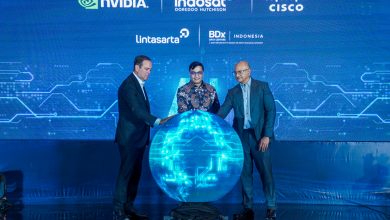Aon’s 2025 Cyber Risk Report: Rising AI-Driven Cyberattacks, Geopolitical Tensions Shaping Asia Pacific Cyber Risk Landscape
Highlighting the Increasing Complexity of AI-Driven Cyberattacks and Geopolitical Tensions in APAC

Aon plc, a leading global professional services firm, has released the Asia Pacific (APAC) findings from its 2025 Cyber Risk Report. The report underscores the increasing complexity of Artificial Intelligence (AI)-driven cyberattacks and the prevalence of geopolitical tensions on cyber risks in the region.
The 2025 Cyber Risk Report is based on Cyber Quotient Evaluation (CyQu) scores from 3,226 Aon clients in 2024 across APAC, EMEA, LATAM, and North America, which analysed more than 1,400 global cyber events to identify trends in the evolving cyber threat landscape. The CyQu database benchmarks over 10,000 clients and has 20,000 client users.
From these insights, the 2025 Cyber Risk Report signals that the APAC region is experiencing significant growth in cyber claims notifications, driven by the rising frequency and sophistication of cyber incidents. Geopolitical forces, such as trade tensions, territorial disputes, and reconfigurations of the global supply chain, is shaping how APAC companies manage cyber risk.
Key Findings of the 2025 Cyber Risk Report
- In the APAC region, cyber incident frequency rose 29 percent year-over-year and up 134 percent over the past four years (2020-2024).
- There was a 22 percent rise in cyber insurance claims notifications in 2024.
- The rise in AI-driven deepfake attacks resulted in a 53 percent increase in social engineering incidents year-over-year. Claims involving social engineering and fraud increased by 233 percent.
- Of the 1,414 global cyber events analysed, 56 developed into reputation risk events, which are defined as cyber incidents that attract significant public attention. Companies affected by these reputation risk events experienced an average shareholder value decline of 27 percent.
- Globally, malware and ransomware attacks were ranked most likely to trigger reputational damage, accounting for 60 percent of all reputation risk events, despite making up only 45 percent of total cyber incidents.
“In 2025, global and regional geostrategic tensions remain a key driver of cyber risk for companies in APAC. This trend is likely to accelerate with nation-state-backed threat actors continuing to employ cyber campaigns to facilitate conflicts or instigate grey-zone operations for the purposes of economic coercion, corporate espionage, or to harm regional rivals by targeting strategically important economic infrastructure,” said Adam Peckman, Head of Risk Consulting and Cyber Solutions in APAC and Global Head of Cyber Risk Consulting at Aon. “As cyber threats grow more complex and interconnected, companies need a clearer view of their exposure, stronger alignment between cyber security and insurance strategies, and the tools to make better, data-driven decisions.”
Aon’s 2025 Cyber Risk Report draws on proprietary data from the firm’s CyQu platform, a patented global e-submission tool that streamlines the cyber insurance intake process and empowers organisations with actionable insights into their cyber exposures and insurability, helping to strengthen both underwriting outcomes and cyber risk management strategies.
The APAC insights from the Aon’s 2025 Cyber Risk Report can be found here.




